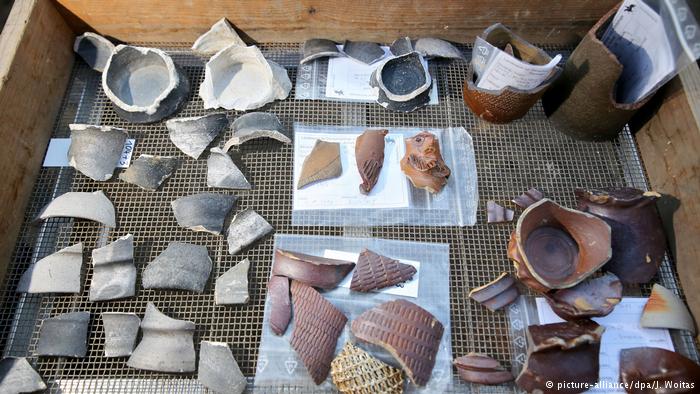“The parties took place in the summer here in the courtyard. The cups were simply thrown away. That’s equivalent to paper cups today.” – Holger Rode, head archaeologist at the Wittenberg excavation.

PHOTO: dw.com
WITTENBERG, GERMANY – a new find at an excavation in Martin Luther’s Wittenberg has revealed that single-use cups have been in use by drunk party goers for much longer than previously thought.
Wittenberg isn’t exactly the place you’d think to find single-use cups that had been made specifically for drinking alcohol at a rave. Wittenberg is famous as the city where church reformer Martin Luther posted his 95 thesis in 1517, the thesis that would turn the world upside down and light the spark that began the Protestant Reformation.
![Joseph Fiennes portraying Martin Luther, in the film "Luther", nailing his 95 thesis to the door of Wittenberg's church. [PHOTO: Read the Spirit]](https://historythings.com/wp-content/uploads/2017/01/95Thes-1024x666.jpg)
Joseph Fiennes portraying Martin Luther, in the film “Luther”, nailing his 95 thesis to the door of Wittenberg’s church. [PHOTO: Read the Spirit]
Originally, the city began as a humble village founded by Flemish settlers in 1180. A hundred years later, another ruling Saxon family, the dukes of Saxe-Wittenberg, took up residence at Wittenberg. In 1293, the town was drafted its own charter. Hundreds of years passed. During that time, Wittenberg became a hub of trade in Germany. By 1422, all the Saxe-Wittenbergs had died out and the rule of the city passed to the House of Wettin.
Frederick III, a member of House of Wettin and prince-elect of the Holy Roman Empire, chose the site of Wittenberg to build a castle and a church. From then on, Wittenberg became a bustling political center for Germany. It was to the doors of Frederick III’s church that Martin Luther would nail his famous 95 thesis.
Despite the town’s political prestige and religious history, archaeologists found “entire layers of cups and animal bones” in the castle courtyard at Wittenberg. According to expert and lead archaeologist, Holger Rode, the courtyard saw hundreds of garden parties where guests would drink copious amounts of alcohol, feast on venison, and, when they were done with their revelry, would simply throw their cups out.
“That’s equivalent to paper cups today,” Rode said.
The cups don’t resemble our plastic and paper cups, however. These mugs were made from porcelain and decorated with mask designs and roll stamps. During Martin Luther’s time, only the rich could afford to have disposable dishes. You were truly wealthy indeed if you had the money to burn on dishes that you’d use once for a party and throw out the same day.
“All the noble families celebrated – the House of Ascania up to 1422 and then the House of Wettin, and they all threw the cups away.” – Holger Rode.

